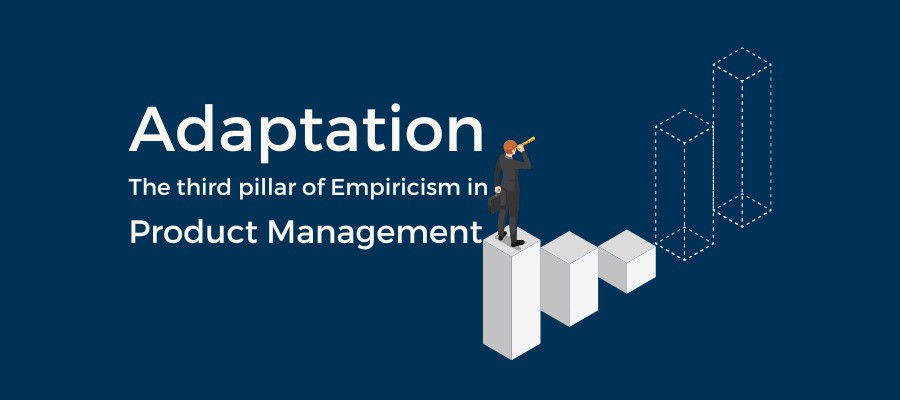Adaptation: The Third Pillar Of Empiricism In Product Management

Are you leveraging the full potential of Empiricism in your product management process? While the Empirical Process controls how Agile Practitioners manage their work, three principles cover the entire process: transparency, Inspection, and Adaptation. Today, we’ll cover the third pillar, “Adaptation.” It is a core Scrum principle that allows Scrum teams to be flexible and adaptive. Do you want to explore more about it? Keep reading to learn what it entails and how it can revolutionize your product management approach!
The Essence Of Adaptation In Product Management:
Adaptation in product management involves embracing change based on the insights gained through inspection. It emphasizes the flexibility to adjust strategies, plans, and product features to maximize value delivery and respond effectively to evolving market needs and stakeholder feedback. By embracing Adaptation, product management teams can stay agile and deliver products that meet customer expectations.
The Purpose Of Adaptation:
The primary purpose of Adaptation in product management is to enable iterative and incremental improvement by continuously refining strategies, products, and processes. Through Adaptation, teams can:
- Respond To Change: Adaptation empowers teams to respond promptly to market conditions, customer preferences, and technological advancements, ensuring the product remains relevant and competitive.
- Optimize Value Delivery: By adapting product features and priorities based on feedback and performance data, teams can optimize value delivery and maximize stakeholder return on investment.
- Enhance Customer Satisfaction: Adaptation allows teams to address customer pain points, incorporate new features or enhancements, and deliver solutions that exceed customer expectations, fostering long-term satisfaction and loyalty.
- Drive Continuous Improvement: By embracing a continuous improvement mindset, teams can iteratively refine their processes, workflows, and collaboration practices to enhance efficiency, quality, and innovation.
Now you are clear about the purpose of Adaption; it’s time to understand its practical implications and how the Product development teams can follow this core principle!
How Can Product Owners Implement Effective Adaptation In Product Management?
To harness the power of Adaptation effectively, product management teams can adopt the following best practices:
- Embrace Change: Cultivate a culture that values adaptability and embraces change as an opportunity for growth and innovation rather than a hindrance.
- Foster Collaboration: Encourage cross-functional collaboration and open communication channels to facilitate the exchange of ideas, feedback, and insights that drive adaptation.
- Prioritize Feedback: Actively seek and incorporate feedback from stakeholders, end-users, and market trends to inform adaptation strategies and prioritize product improvements.
- Iterate Incrementally: Break down product development efforts into small, manageable increments and iterate frequently based on inspection findings and stakeholder feedback.
- Monitor Performance: Establish key performance indicators (KPIs) and metrics to track product performance, measure the impact of adaptation efforts, and inform future decision-making.
Even though following the adaptation approach is a responsibility of every Agilist, organizations can raise awareness among their employees about it. Here, we’ll highlight the various Agile Scrum practices that direct the Agile Teams to be adaptive!
Adaptation In Action: How Does It Influence Agile Scrum Practices?
In this segment, let's explore how Adaptation influences Agile Scrum practices and empowers product management teams to drive continuous improvement:
- Sprint Planning: During Sprint Planning, the team adapts its backlog based on changing priorities, feedback from the previous sprint, and emerging requirements.
- Daily Scrum: The Daily Scrum or Daily Standup allows the team to adapt its plans and address any obstacles or challenges during the sprint.
- Sprint Review: In the Sprint Review, the team adapts its product backlog based on stakeholder feedback and insights from inspecting the product increment.
- Sprint Retrospective: The Sprint Retrospective is a dedicated time for the team to reflect on its processes and adapt its practices to improve collaboration, efficiency, and product quality.
Does your Agile Team also leverage any of the above Agile Scrum practices? Whether you’re a Scrum Team member or the Scrum Master, you should follow the core principles of Empiricism and make meaningful adjustments in the team to drive the end Product Goal.
Final Thoughts:
Are you ready to embrace Adaptation and unlock the full potential of Empiricism in your product management journey? As the third pillar of Empiricism, Adaptation is crucial in empowering product management teams to thrive in today's competitive market landscape. By embracing Adaptation, teams can drive continuous improvement and deliver products that delight customers. So, good luck!
References:
https://www.scrum.org/resources/blog/three-pillars-empiricism-scrum
https://resources.scrumalliance.org/Article/empirical-process-control-scrum



